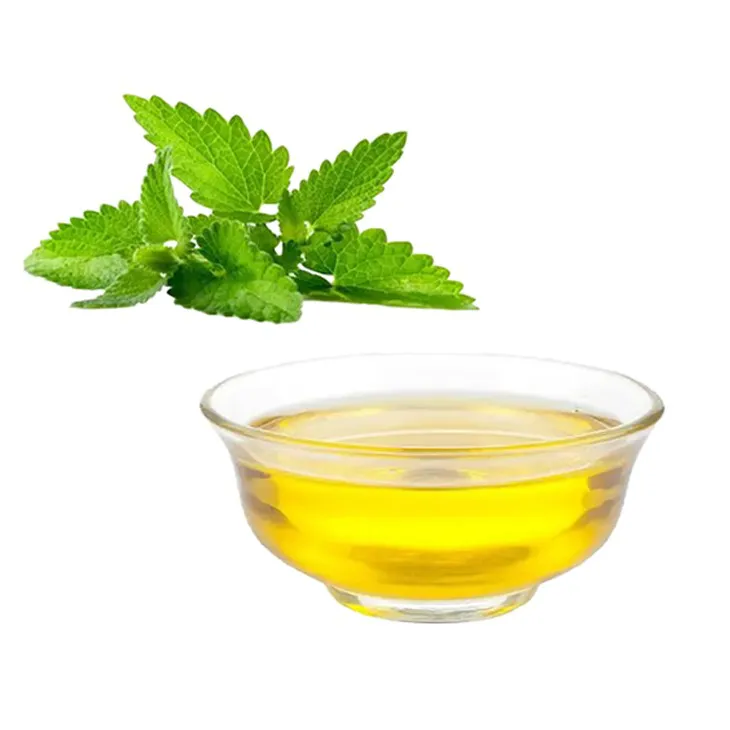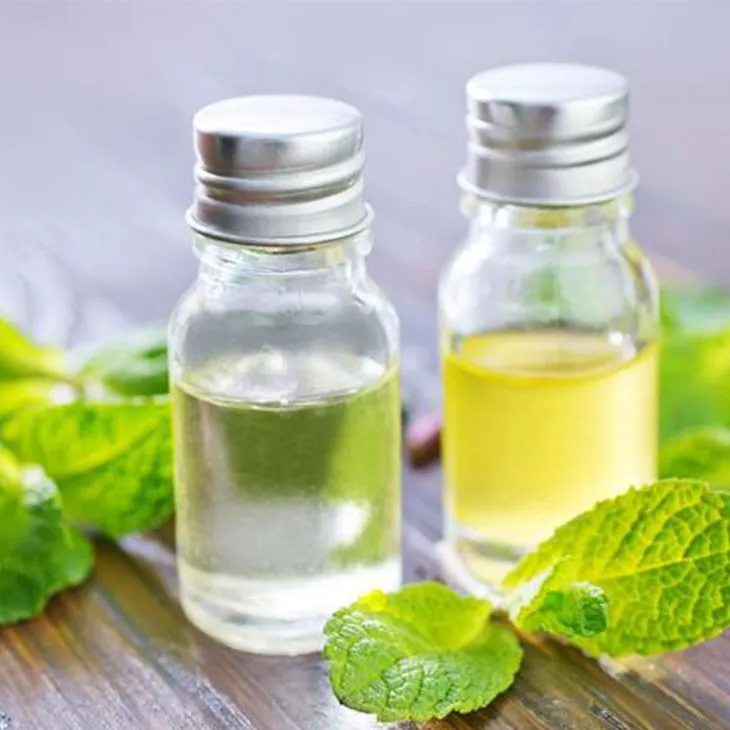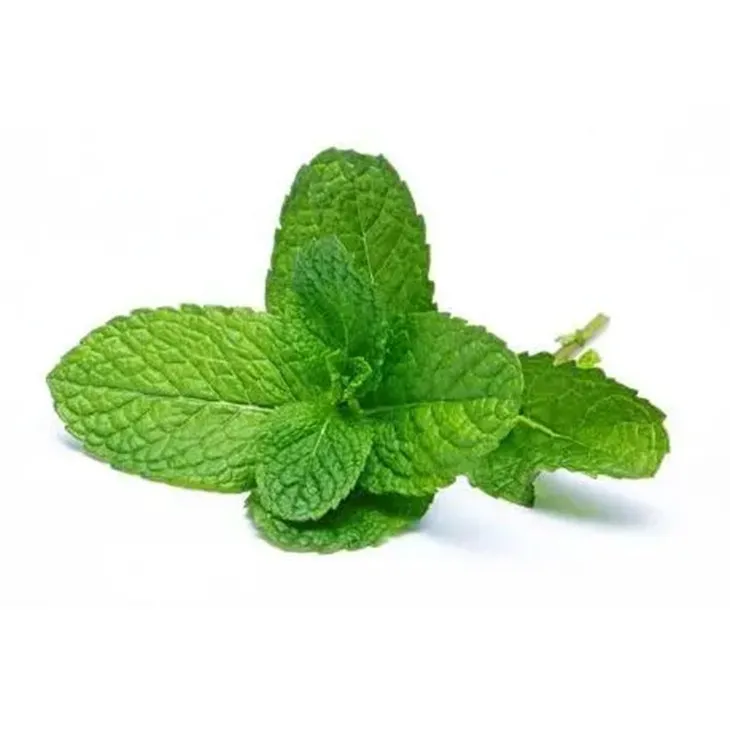- 0086-571-85302990
- sales@greenskybio.com
The Best Types of Peppermint Oil: A Guide to Choosing the Best Peppermint Oil
2024-11-12

Introduction
Peppermint Oil has been used for centuries for its various health benefits and pleasant aroma. It is a versatile essential oil that can be used in aromatherapy, skincare, haircare, and even for household cleaning. However, with so many different types of Peppermint Oil available on the market, it can be challenging to choose the best one. In this guide, we will explore the different types of Peppermint Oil, the factors to consider when choosing the best one, and its various applications.

Types of Peppermint Oil
1. Pure Peppermint Oil
Pure peppermint oil is extracted directly from the peppermint plant (Mentha × piperita). It is the most concentrated form of peppermint oil and contains a high level of menthol, which gives it its characteristic cooling and refreshing effect. Pure peppermint oil is often used in aromatherapy to relieve stress, improve focus, and relieve headaches. It can also be used topically when diluted with a carrier oil to soothe muscle pain and itching.
2. Organic Peppermint Oil
Organic peppermint oil is made from peppermint plants that are grown without the use of synthetic pesticides, fertilizers, or other chemicals. This type of peppermint oil is considered to be of higher quality as it is free from harmful chemicals. Organic peppermint oil is often used in natural and organic skincare and haircare products. It is also a popular choice for those who prefer to use products that are environmentally friendly and sustainable.
3. Therapeutic - Grade Peppermint Oil
Therapeutic - grade peppermint oil is a type of pure peppermint oil that has been tested and certified for its therapeutic properties. It is often used in aromatherapy and natural medicine to treat various health conditions such as digestive problems, respiratory infections, and menstrual cramps. Therapeutic - grade peppermint oil is also used in massage therapy to relieve muscle tension and pain.

Factors to Consider When Choosing Peppermint Oil
1. Purity
When choosing peppermint oil, it is important to look for a product that is pure and free from additives. Some peppermint oils on the market may be diluted with other oils or contain synthetic fragrances. To ensure purity, look for products that are labeled as "100% pure peppermint oil" or "pure essential oil."
2. Quality
The quality of peppermint oil can vary depending on factors such as the quality of the peppermint plant, the extraction method, and the storage conditions. High - quality peppermint oil should have a strong, fresh minty aroma and a clear or slightly yellowish color. It should also be free from any off - odors or signs of spoilage.
3. Source
The source of the peppermint oil can also affect its quality. Peppermint oil that is sourced from plants grown in their native regions, such as the United States or Europe, is often considered to be of higher quality. This is because these regions have the ideal climate and soil conditions for growing peppermint plants.
4. Extraction Method
There are several methods for extracting peppermint oil, including steam distillation, cold - pressed extraction, and solvent extraction. Steam distillation is the most common method and is considered to be the best for producing high - quality peppermint oil. This method involves passing steam through the peppermint plant to extract the oil, which helps to preserve the natural properties of the oil.

Applications of Peppermint Oil
1. Aromatherapy
Peppermint oil is a popular choice for aromatherapy due to its refreshing and invigorating aroma. It can be used in diffusers, inhalers, or added to bath water to relieve stress, improve mood, and boost energy. Inhaling peppermint oil can also help to clear the sinuses and relieve respiratory problems.
2. Skincare
Peppermint oil has antibacterial and anti - inflammatory properties, which make it a great addition to skincare products. It can be used to treat acne, soothe itchy skin, and reduce redness. However, it should be used with caution as it can be irritating to some skin types. When using peppermint oil on the skin, it is important to dilute it with a carrier oil such as jojoba oil or almond oil.
3. Haircare
Peppermint oil can stimulate hair growth and improve scalp health. It can be added to shampoo or conditioner to promote a healthy scalp and add shine to the hair. Peppermint oil can also be used as a natural dandruff treatment by massaging it into the scalp.
4. Household Cleaning
Peppermint oil has natural antibacterial and antifungal properties, which make it a great alternative to chemical - laden household cleaners. It can be added to homemade cleaning solutions to clean countertops, floors, and bathrooms. Peppermint oil also has a pleasant aroma that can leave your home smelling fresh and clean.

How to Use Peppermint Oil Safely
1. Dilution
Peppermint oil is a very concentrated oil and should always be diluted before use. When using peppermint oil topically, it should be diluted with a carrier oil such as coconut oil, olive oil, or almond oil. The general rule of thumb is to use a 1 - 2% dilution ratio, which means 1 - 2 drops of peppermint oil per teaspoon of carrier oil.
2. Patch Test
Before using peppermint oil on a large area of skin, it is important to perform a patch test. Apply a small amount of diluted peppermint oil to a small area of skin, such as the inside of your wrist, and wait 24 hours to see if there is any reaction. If there is no reaction, it is safe to use the oil on a larger area.
3. Avoid Contact with Eyes and Mucous Membranes
Peppermint oil can be irritating to the eyes and mucous membranes. Avoid getting peppermint oil in your eyes, nose, or mouth. If accidental contact occurs, rinse immediately with plenty of water.
4. Keep Out of Reach of Children and Pets
Peppermint oil can be toxic if ingested in large amounts. Keep peppermint oil out of reach of children and pets to prevent accidental ingestion.
Conclusion
Peppermint oil is a versatile and beneficial essential oil that can be used for a variety of purposes. When choosing the best peppermint oil, it is important to consider factors such as purity, quality, source, and extraction method. By following these guidelines and using peppermint oil safely, you can enjoy the many benefits of this wonderful essential oil.
FAQ:
What are the main types of peppermint oil?
There are generally two main types: peppermint essential oil and peppermint flavor oil. Peppermint essential oil is obtained through steam distillation of peppermint leaves and is more natural and pure, often used in aromatherapy, natural remedies, and some skincare products. Peppermint flavor oil is mainly used for flavoring in food, beverages, and oral care products, and it may contain some synthetic components.
How can I determine the quality of peppermint oil?
You can consider several factors. Firstly, look at the source of the peppermint. High - quality peppermint oil is often sourced from well - known regions with a good reputation for growing peppermint. Secondly, check the extraction method. Steam - distilled essential oil is usually of higher quality. Thirdly, examine the color and clarity. Pure peppermint essential oil is typically clear or slightly yellowish. And finally, the smell should be a strong, fresh, and pure peppermint scent without any off - odors or chemical smells.
What are the common applications of peppermint oil?
Peppermint oil has a wide range of applications. In aromatherapy, it can help relieve stress, improve concentration, and promote relaxation. In skincare, it has cooling and soothing properties, which can be beneficial for irritated skin. It is also used in haircare to promote scalp health. In addition, in the medical field, it may be used for minor pain relief, such as headache relief when applied topically. In the food and beverage industry, peppermint flavor oil is used to add a minty flavor to products like candies, chewing gums, and teas.
Is there any difference in the price of different peppermint oils?
Yes, there are differences. Generally, pure peppermint essential oil, which is of higher quality and has more natural and pure ingredients, is more expensive. This is because the extraction process is more complex and the raw materials need to be of high quality. On the other hand, peppermint flavor oil, which may contain some synthetic components, is usually less expensive. However, the price can also be affected by factors such as brand, packaging, and quantity.
Can peppermint oil be used directly on the skin?
Peppermint essential oil is very concentrated and should not be used directly on the skin in most cases. It needs to be diluted with a carrier oil, such as coconut oil or almond oil, before topical application. This is to prevent skin irritation or allergic reactions. However, some products that already contain diluted peppermint oil can be used directly on the skin as directed.
Related literature
- The Complete Guide to Peppermint Oil: Properties, Uses, and Benefits"
- "Peppermint Oil: Quality Standards and Selection Criteria"
- "Aromatherapy with Peppermint Oil: A Comprehensive Review"
- ▶ Hesperidin
- ▶ Citrus Bioflavonoids
- ▶ Plant Extract
- ▶ lycopene
- ▶ Diosmin
- ▶ Grape seed extract
- ▶ Sea buckthorn Juice Powder
- ▶ Fruit Juice Powder
- ▶ Hops Extract
- ▶ Artichoke Extract
- ▶ Mushroom extract
- ▶ Astaxanthin
- ▶ Green Tea Extract
- ▶ Curcumin
- ▶ Horse Chestnut Extract
- ▶ Other Product
- ▶ Boswellia Serrata Extract
- ▶ Resveratrol
- ▶ Marigold Extract
- ▶ Grape Leaf Extract
- ▶ New Product
- ▶ Aminolevulinic acid
- ▶ Cranberry Extract
- ▶ Red Yeast Rice
- ▶ Red Wine Extract
-
Carrageenan Extract Powder
2024-11-12
-
Pine bark Extract Powder
2024-11-12
-
Chia Seed Powder
2024-11-12
-
Beetroot juice Powder
2024-11-12
-
Grapefruit Seed Extract Powder
2024-11-12
-
melatonin extract
2024-11-12
-
Ginger Extract
2024-11-12
-
Tormentil Extract
2024-11-12
-
Black Rice Extract
2024-11-12
-
Saw Palmetto Extract
2024-11-12





















